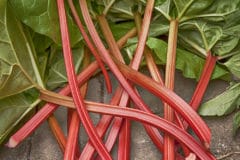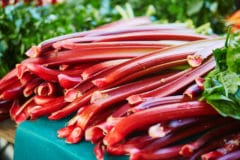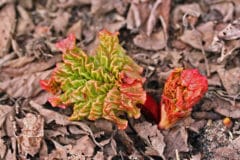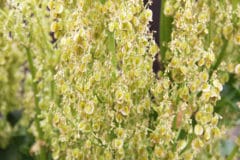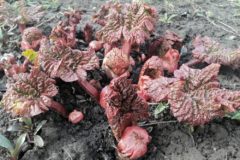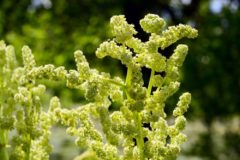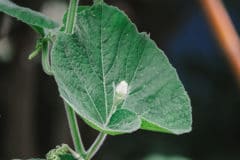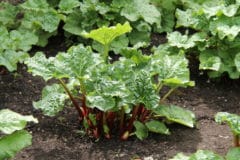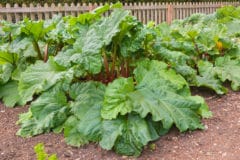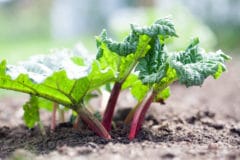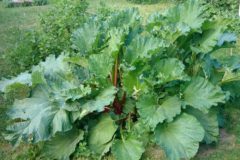When is my rhubarb ready to harvest?
You cannot count on color to determine the ripeness of your plants; many varieties of rhubarb turn red or pink when ripe, but others don’t. Rather than looking for a specific color on your stalks, wait for them to be at least seven inches tall, although ten inches or more is preferable.
It’s also important not to harvest too soon in the life of the plant; you want it to develop strong roots and good health so it will return for many seasons. For this reason, you shouldn’t harvest in the first year or two after you’ve planted.
When is rhubarb not ready to harvest?
There are times when rhubarb should not be harvested, as well. Do not harvest rhubarb when:
- Stalks are less than seven inches long, although ten inches is better.
- The plant is less than two years old. This will allow your plant to become established.
- Summer is half over. Your plant will still produce, but it needs to save energy for the winter; don’t harvest after mid-July.
How do I harvest rhubarb?
There are two basic ways of harvesting your rhubarb; you can either pull or cut the stalks from the plant. Both are simple, but both need to be done correctly in order to protect your rhubarb’s future.
The first thing to know about harvesting is to start from the outside of the plant and work your way toward the center, taking only the stalks that are tall enough to be harvested.
To pull your rhubarb, simply grasp the stalk near the ground, tilt it slightly toward you and pull gently. The stalk should separate from the plant with little force; if it doesn’t don’t force it, just switch to cutting. Don’t twist or jerk the stalk or you risk damaging the roots.
Harvesting by cutting is easy enough, too. You’ll need a sharp knife or garden shears. Again, grasp the stalk near the ground and cut cleanly. Sawing, twisting and cutting, or pulling and cutting may damage the plant’s roots, so avoid these actions.
Keep Feeding for Future Harvests
Keep in mind that rhubarb is a heavy-feeding plant, so you want to make sure there is sufficient compost and manure present to keep your plants nourished throughout the season, and to help offset the loss of nutrients caused by harvesting.
It really is that simple to harvest your rhubarb! When you have those stalks in hand, cut off the leaves, add them to your compost, and get to cooking with all that rhubarb!

